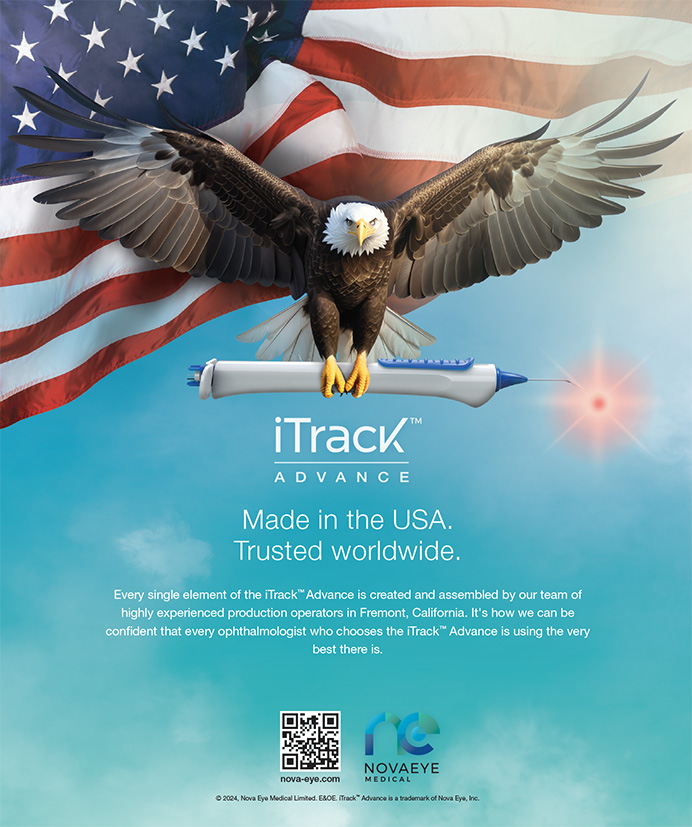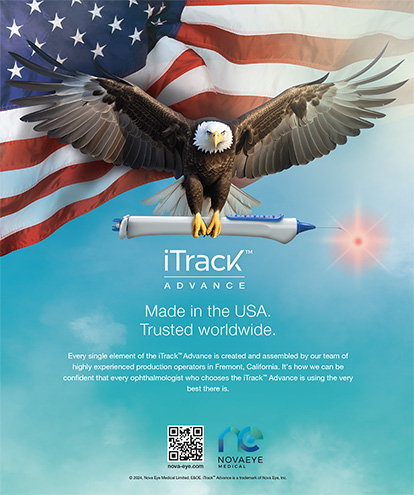With the flattening of the LASIK market comes the need to diversify your practice and ensure that all of your eggs are not in one basket. Offering comprehensive eye care is imperative to acquiring a wide age range of patients who have a variety of vision correction needs. With a comprehensive approach, you have an opportunity to get patients into your facility and to offer them ongoing vision care while increasing your word-of-mouth referrals.
LOOK BEYOND THE LASIK HORIZON
It is no secret that LASIK growth has slowed since its upsurge earlier in the decade, especially with the adoption of procedures such as conductive keratoplasty, LASEK, and epi-LASIK. If you are proactive about the future of refractive surgical care and adjust both the scope of your practice and your marketing approach, then you will be better prepared to cope with potential patients who may be indecisive about refractive correction. It is time to consider how to complement your LASIK surgical volume.
One procedure in particular is helping refractive centers make up for lost LASIK market share: cataract surgery with an IOL. With careful planning, you can turn a necessary cataract procedure into a lucrative source of revenue by giving patients access to advanced-technology IOLs and aiming this new option at baby boomers.
TARGET BABY BOOMERS
With 78 million baby boomers in the United States, you cannot afford to ignore their visual needs.1 This population is perfectly poised to help you increase your practice's revenue if you incorporate strategic "anti-aging" marketing. One plan is to up sell your baby boomers with cataracts and then get their presbyopic children in the door for refractive lens exchange.
Grow Along With IOLs
Although the IOL market is quite immature and its growth has been disappointing thus far, it is expanding slightly and becoming more intriguing.2 IOLs are expected to represent more than 30 of the world's refractive market by 2009.3 As Director of Refractive Services at Associated Eye Care in Stillwater, Minnesota, I feel strongly that premium IOLs are the future of refractive marketing. My practice is currently experiencing success with redirected cataract marketing efforts. By emphasizing the benefits of the more advanced lens replacements to cataract patients, my colleagues and I are upping revenue without increasing labor and other costs. Because we are marketing refractive lens exchange to our presbyopic patients, we are playing into the baby boomers' desire to look and feel young by helping them to avoid one of the most obvious symbols of aging—bifocals.
Lenses like the Crystalens (Bausch & Lomb, Rochester, NY), AcrySof Restor IOL (Alcon Laboratories, Inc., Fort Worth, TX), and ReZoom lens (Advanced Medical Optics, Inc., Santa Ana, CA) allow recipients a range of vision, which appeals to cataract patients and presbyopes. The key is getting the word out about these upgrades and their benefits.
RECOGNIZE THAT BENEFITS TRUMP COST
The price of IOLs can be double that of LASIK, which makes the former an especially lucrative up sell for you (and justification for advertising). The question is, how do you convince your patients that the benefits are worth the cost? Educate them on the advantages of the advanced lenses and translate the technological upgrade into terms to which they can relate. For instance, let them know that many patients who receive IOLs enjoy clear vision at any distance without spectacles.
The second element of countering cost involves offering payment options that patients can easily fit into their budget. IOL candidates may view flexible options, like the extended payment plans from CareCredit (Anaheim, CA), as a way to have the elective upgrade they desire. Discuss financing in detail during the initial phone call and consultation to put patients at ease about cost before they can use it as an excuse to talk themselves out of the procedure.
TARGET CATARACT PATIENTS
To begin increasing your IOL volume, infuse cataract marketing into all levels of your practice from the inside out. Gather your staff together and ensure that their skill and comfort level with IOLs is high.
Understand your audience. Keep in mind that your IOL patient demographic is quite different from the younger LASIK audience. Plan on spending more face time with cataract patients to win their trust and convince them that the enhanced visual results are worth the higher fees. Whatever you do, however, do not pigeonhole your target market as "aging" or "old." Your IOL message should promote youthfulness, freedom, and independence.
Tell them what you think. Many physicians find that their conversion rates improve once they start choosing their patients' ideal IOLs for them. Shareef Mahdavi, founder of the medical technology marketing firm SM2 Strategic (Pleasanton, CA), has written, "Too often, that sacred moment between the surgeon and the patient—when the patient is trying to decide, 'Is this right for me?'—is marred because the surgeon allows or even forces the patient to choose a procedure, lens, and/or package of services."2 Instead, use this time to recommend a procedure and explain why you feel it is the best choice for a patient's needs.
Roll out the red carpet. Remember that even one positive patient experience can go a long way. A recent study by the Center for Studying Health System Change (Washington, DC) concluded, "Patients undergoing self-pay procedures typically face significant barriers to effective shopping and instead rely on word-of-mouth recommendations to choose providers."4 By giving your cataract patients the same red-carpet treatment you already offer to your LASIK patients, you can generate more of those valuable referrals.
Get the word out. Aim to educate patients before they even set foot in your office. Use practice brochures, marketing materials, and advertising to provide information about the benefits of IOLs. The smart use of public relations and community involvement can also help you to deliver your message. Once the patient is in your office for a consultation, educate him on the procedure and incorporate tools like the IOL Counselor (Patient Education Concepts, Inc., Houston, TX).
EXPLORE YOUR CATARACT OPPORTUNITIES
Up selling cataract patients makes perfect sense. As cataract procedures gain a more prominent role in refractive practices, this change can ultimately increase patients' satisfaction and boost your bottom line. If you are not yet up selling your cataract patients from standard monofocal lenses to advanced-technology IOLs, you should consider the comprehensive benefits of the latter.
Phil Jackson may be reached at (651) 275-3105; pjackson@associatedeyecare.com.
- Mahdavi S. Ka-boom! Here they come. Cataract & Refractive Surgery Today. February 2005;5(2):85-86.
- Mahdavi S. A diagnosis for the future of refractive IOLs. Cataract & Refractive Surgery Today. March 2007;7(3):65-68.
- World refractive vision correction market to reach $4.5 billion by 2009 says new report [press release]. Report Buyer, April 29, 2007.
- Self-pay markets in health care: consumer nirvana or caveat emptor? [press release]. Center for Health System Change, February 6, 2007.


